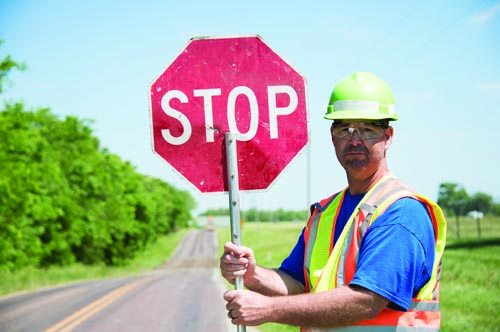Workers in a wide variety of jobs and industries wear high-visibility safety apparel to alert others of their presence, particularly in dark or dim places. Users include utility linemen, construction workers, police officers, and school bus drivers, to name a few.
Different types
The materials in high-visibility garments, including vests, bibs, coveralls, and gloves, may look alike, but they have key differences. For example, “fluorescent material takes a portion of invisible ultraviolet light from sunlight and, through special pigments, sends it back to the viewer as more visible light,” the Canadian Center for Occupational Health and Safety explains. This type of material only functions in natural sunlight.
Another type of high-visibility safety apparatus is retro-reflective material, which returns light in the direction of its source. “This property will let a driver see the light being reflected from the retro-reflective tape on a person’s garment (as long as the person is standing in the light’s beam),” CCOHS notes. Although this type of material can be used in daylight, it is most effective in low-light conditions.
What to look for
In addition to complying with relevant OSHA standards for high-visibility apparel, employers should keep in mind certain factors when determining which apparel to supply to their workers. According to CCOHS:
Stripes of color that contrast with the background material provides good visibility and stripes on the arms and legs can help provide cues as to how the worker is moving.
All high-visibility garments should be fitted to individual workers. However, forget to take into account the bulk of clothing that needs to be worn under the device.
Keep worker comfort in mind. “Parts of the device that come in direct contact with the worker should not be rough, have sharp edges, or projections that could cause excessive irritation or injury,” CCOHS states, adding that the device should also be lightweight.
No clothing or equipment should cover the high-visibility materials.
Ensure workers keep their high-visibility apparel clean and in good condition.
Replace any garment that is worn, torn or excessively soiled, as it provides acceptable levels of visibility.

